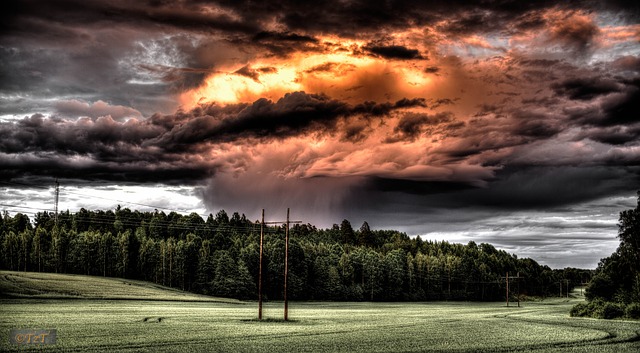
It’s understood that there’s a calm before the storm. However, the emotional state of homeowners is nothing but calm in such situations. Floods create havoc to a home’s exterior and interior, causing thousands of dollars in damage and up to months of inconvenience. Yet there is hope for those who are proactive in reducing the amount of damage before a storm comes. Furthermore, reacting the right way can make the removal and extraction process a lot smoother.
Save Valuables
Create a list of all the valuables in the home. Place the items on higher floors of the house. Valued possessions, such as family photos or DVDs, will be ruined if saturated by incoming water. Place all jewelry, tax information, and smaller valuables in a water proof safe or a secure place in the attic.
Hazardous Materials
Water will ruin valuables but it’s also necessary to take inventory of hazardous elements such as paint and cleaning supplies that ruin a home’s interior and are harmful to inhabitants if inhaled.
Protect Pets
In most cases, pets won’t be allowed in shelters that house humans. Alternatively, you don’t want to leave a pet behind. They may become injured or grow irritable due to abandonment or a stressful environment. Plan to take your pet to an animal shelter or the home of a friend or family member.

Plan a Route
Contact the local authorities or research online for safe escape routes in your neighborhood. Learn the routes that are less prone to flooding and will not pose a threat to your vehicle or its inhabitants.
Gather Supplies
If you’re planning on weathering the storm inside your home, gather supplies in case you lose electricity. Get plenty of water, food (that requires no refrigeration), and flashlights with fresh batteries. In the case that you have to evacuate the premises, gather sleeping bags, first-aid supplies, needed medications, and necessities for young children and elderly family members.
Prepare Appliances
Shut off appliances, unplug them from the wall sockets, and turn off the power from the fuse box. Put major appliances such as refrigerators, washers, and dryers on cement blocks so the motors remain above water level. Alternatively, wrap appliances in a waterproof material and fasten with a tie or rope.
Address Drainage
Sometimes, it’s not the rush of the flood itself but your home’s inability to drain water that causes the most damage. Clear gutters and check for gaps that may direct water toward the foundation of the home. Downspouts need to divert water (at least) a few feet from the home. Ask a contractor to inspect your spouts and the direction of slopes around your home.
Inspect Foundation and Windows
Fill cracks in the foundation with professional sealant. Basement windows may need inspection. Buy well covers for windows so water will not get into the well and seep into your basement.
Check Sewage
Sewer backups happen during floods. Check your homeowner’s policy as well as details of your flood insurance. Depending on the logistics of the flood and subsequent damage done to your sewage system, you may be liable. You can install a backflow preventer, which will reduce your chances of the sewer main getting backed up. A sewage line inspection will spot any blockages to the main line. If the sewer does get backed up, your wall could be saturated with water containing bacteria, fungi, parasites, etc. Furthermore, mold can begin to germinate within hours. Call professionals at Restorationeze.com about water removal and extraction services.
Get a Sump Pump
Sump pumps remove water from a crawlspace or basement. Otherwise, mold and mildew grows and becomes a health hazard. It’s relatively cheap to have a pump put in place, yet you may need more than one depending on the potential size of a flood. However, the sump pump only works if your home is receiving power. You will need a home generator in the event that the flood turns off your home’s primary source of power.
Identify Flood Zones
A FEMA flood map identifies flood zones. Understand whether the specific area you live in is at a high or low risk. Lookup your community’s flood map at the FEMA Flood Map Service Center. Flood maps are updated with new information and recommendations.
Turn Off Electricity
A home’s electricity may pose a health risk to rescue workers and your family. Turn off electricity to all parts of the home that will become flooded. If flood waters are getting close to an electrical box, quickly call the power company and have the electricity cut off from the source.
Harry White has worked in the construction industry for many years, and enjoys doing projects on his own home in the spare time that he has. With a vast amount of knowledge, he enjoys pointing people in the right direction when they have queries on building and maintenance tasks.






heather says
This is a great post and one that I will have to print out. Thanks for the helpful information you can never prepare enough.
Rosie says
I need to get serious about this – I’m totally not prepared. All I have is a bucket of water saved. Those clouds are scary!